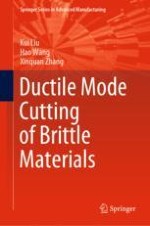2020 | OriginalPaper | Buchkapitel
3. Ductile Mode Cutting Characteristics
verfasst von : Kui Liu, Hao Wang, Xinquan Zhang
Erschienen in: Ductile Mode Cutting of Brittle Materials
Verlag: Springer Singapore
Aktivieren Sie unsere intelligente Suche, um passende Fachinhalte oder Patente zu finden.
Wählen Sie Textabschnitte aus um mit Künstlicher Intelligenz passenden Patente zu finden. powered by
Markieren Sie Textabschnitte, um KI-gestützt weitere passende Inhalte zu finden. powered by
